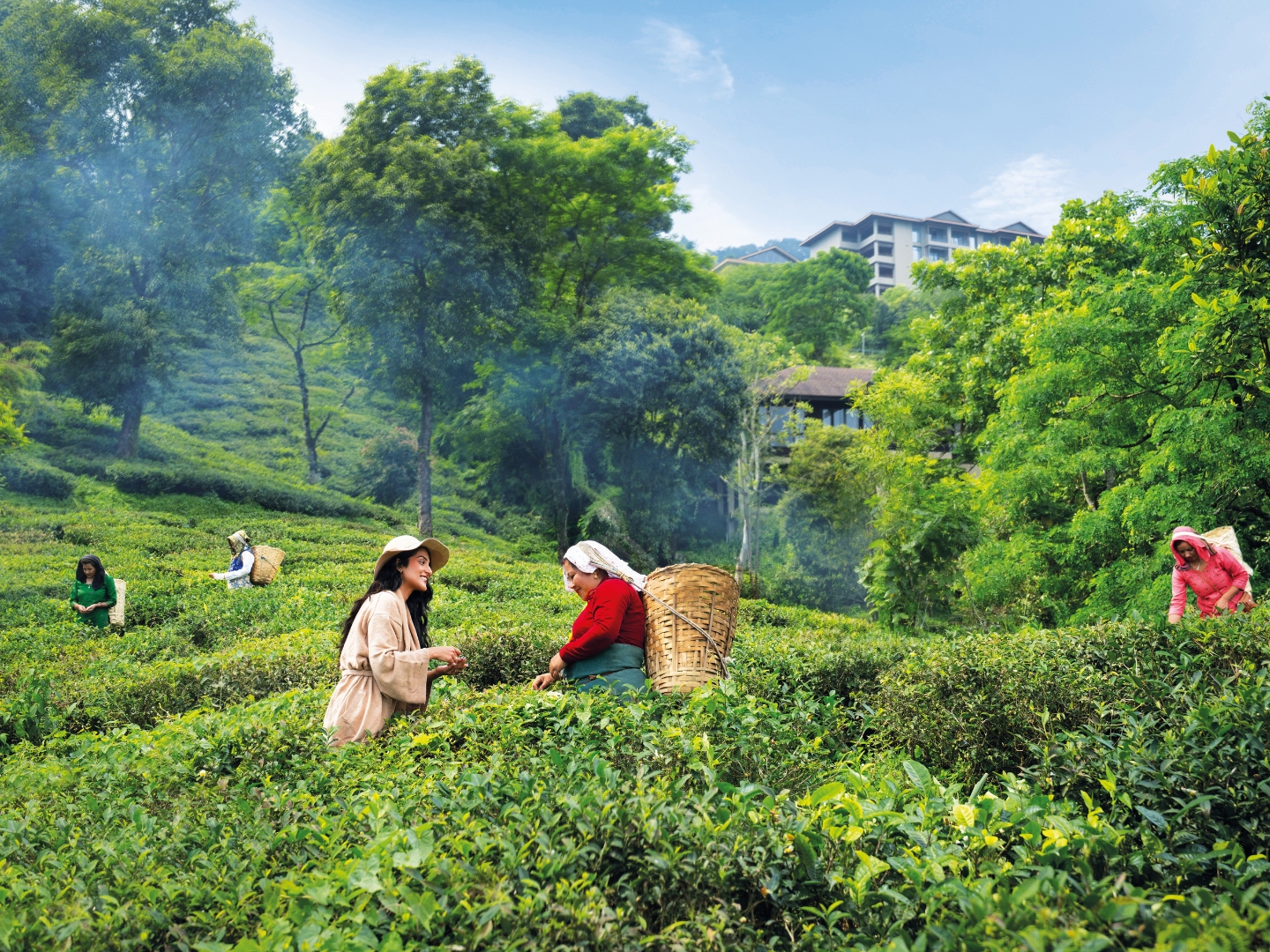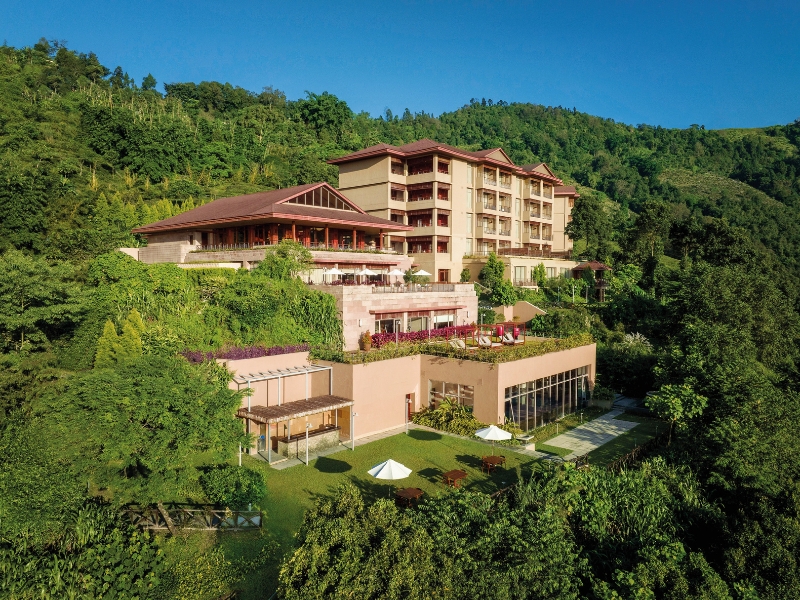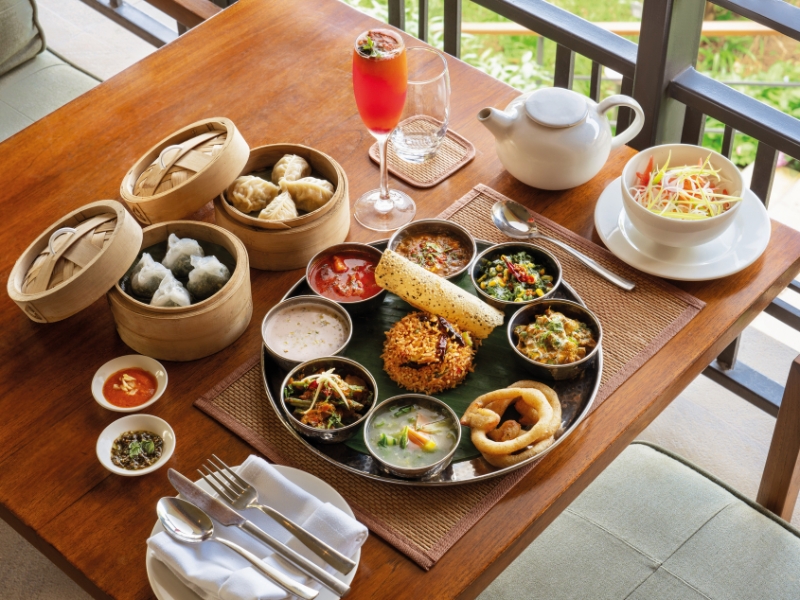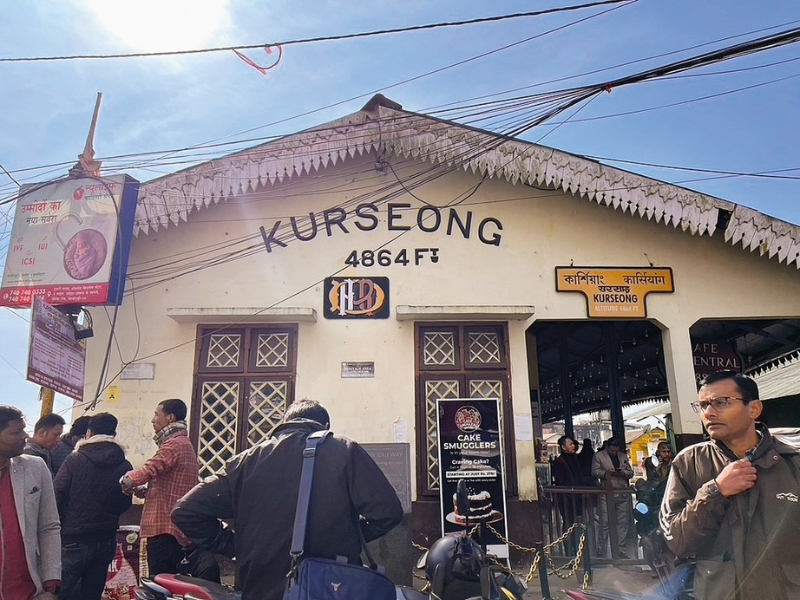
The tea plantations surrounding the Makaibari estate have verdant bushes trimmed for cultivation (Photo: Taj Chia Kutir Resort and Spa)
Parvez is our tea sommelier, and he honours the tea leaves arranged in front of him with the deference of a religious ritual. As the water blooms into liquid gold, he deadpans. “Our greatest fan was a British lady who loved our tea, especially this Silver Tips.”
He holds up the amber liquid to the light and explains that although the history of tea in India is stained by colonial heritage, the tea that we are about to sample from the Makaibari estate has never been under British rule. In 1859, the Banerjee family started this factory, the first one in the area (Makai refers to the cornfields which had covered the fields before tea). The centuries-old Britannia machines and Belfast dryer can still be seen inside the building that has always been under Indian ownership.
“But this elderly British lady knew about our teas and drank it every day. She was our biggest publicist,” he continues before pausing for dramatic effect. “Until she passed away in 2022. And her son wrote to us, asking for this tea.” He holds up a glass of the fragrant brew and adds, “to give to every dignitary and head of state around the world attending her funeral”.
The room is a sea of murmuration as we realise that Parvez is talking about Queen Elizabeth II’s favourite cuppa. A letter from King Charles is framed on the wall of Taj Chia Kutir, where we are gathered at four in the afternoon, enjoying the best of Darjeeling teas.
We learn that the Silver Tips Imperial — the most expensive option in this tasting menu and the one beloved by royalty — is only harvested during the full moon and dried by morning, so that the rays of the sun do not touch the plucked leaves. The locals serenade the magic of the moon with communal song — scientists, too, have theories about capillary action during a full moon — and the harvesting of this rare leaf becomes a joyous, festive event.
As a Bengali woman, I grew up hearing of Makaibari tea as the finest of Darjeeling teas. This tea is never to be boiled with milk and cinnamon and cardamom — that is reserved for lesser teas, the ones of the cheapest CTC (crush-tear-curl) variety that require dressing to be palatable. The best Makaibari tea is like fine wine, and the ideal way to taste it is to smell, then deeply slurp a tiny bit of the amber gold between pursed lips.
taj_chia_kutir.jpg

We landed in Kalimpong airport, and the drive to Taj Chia Kutir is 1½ hours, through verdant terraces of tea plantations. The driver was happy to have guests flying into the area. With Indian travellers, especially honeymooners, discovering Malaysia and Thailand offering trips as cheap as those for within India, the young people were all flocking overseas. “There is no nightlife here for city people,” he tells us dolefully.
Yet all around us was the crisp mountain air, the peaks of the Himalayan range and carpets of green from tea bushes all trimmed at a height for cultivation. It took Robert Bruce, a Scottish mercenary and trader, to first identify tea plants growing wild in the Upper Brahmaputra Valley in 1823. Tea trees, when left uncultivated, grow tall and can live for more than 1,000 years, and some Assamese tribes were drinking a decoction of the leaves. But it was Bruce who introduced Assam tea to Britain. At the time, the British were trying to transplant Chinese tea saplings to fuel their tea addiction.
At Makaibari, the trek paths meander through villages and some tea trees growing wild. One tree stands tall despite having been planted in 1859 — it is now 166 years old.
****
pahari_farm-to-table_thali.jpg

This property feels magical in the morning: the serenity of the sunrise and birdcalls in crisp tea garden mountain air, the golden dance of insects over pine trees at breakfast as they craft susurrations in the air, the delicious Pahari cuisine with ferns and herbs grown on the premises. For the first time, I tasted Sel Roti, a crispy, ring-shaped rice bread paired with fresh yogurt and honey, like a delicious Pahari donut.
The Makaibari factory sprawls over the landscape with its distinctive corrugated roof. Photography is prohibited inside, but it feels like a museum at places, with old-timey weighing scales and machines that look as if one has stepped through a portal to another age. We are guided through the rooms where the tea is processed — first, second, monsoon, autumn flush — and learn that autumn is the sweetest month as bushes burst into a last great performance in October and November before going into hibernation as the temperatures dip below 16°C.
In 1910, as a marketing gimmick, the British started serving free tea at railway stations. A short drive away is Kurseong’s gorgeous historic train station, where the Darjeeling Himalayan Railway’s Toy Train stops. This is a Unesco World Heritage experience chugging through scenic landscapes, offering glimpses of misty valleys and quaint hillside towns. The Kangchenjunga peak can be viewed from multiple sites in the area, dressed by the sun in golden hues.
kurseong_train_station.jpg

****
Every evening offered music by a local band at the bar, accompanied by tea-infused cocktails. Stepping away from the music, one can hear the hum of the night insects under a starry sky incandescent with stars, glowing with celestial light in the absence of man-made electric lamps.
As a city person, I understand the lure of the bright lights and activity. Yet this resort not only offered a glimpse into the heritage of Darjeeling’s tea culture but also provided a space to unwind, reflect and reconnect with nature. In 1988, Makaibari went fully organic and within this 1,400 acres of land, 700 is covered by tea, green and lush, the sustainable farming practices that make Makaibari tea unique.
I fell in love with tea again: the delicate Silver Tips Imperial, as well as the more robust Autumn Flush. Tea that needs no milk or sugar, and is delicate and aromatic. I went to soothe a world-weary soul, write and meditate … and I walked with the village children who break into peals of easy laughter. I found myself again.
This story first appeared on Mar 3, 2025 in The Edge Malaysia.


